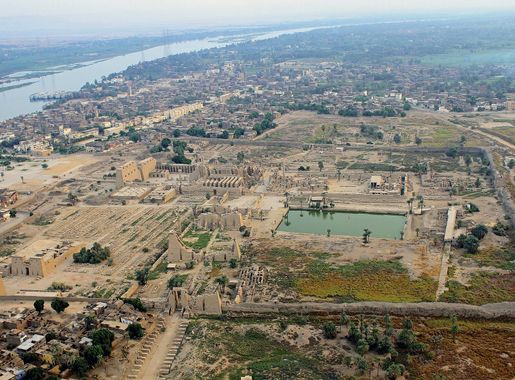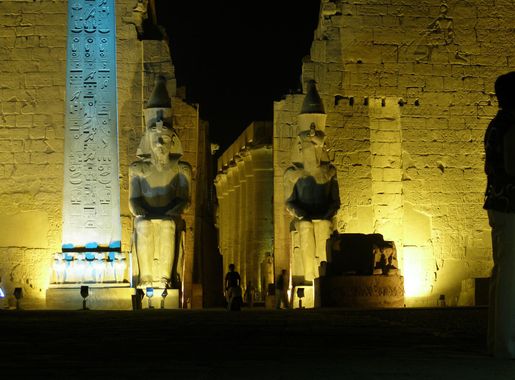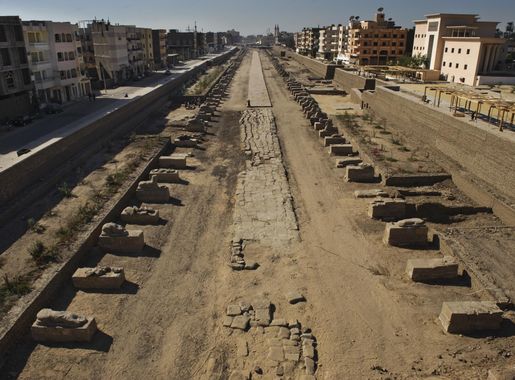
The Enchanting East Bank of Luxor: A Gateway to Ancient Egypt
Explore the East Bank of Luxor, Egypt's treasure trove of ancient wonders and vibrant local culture, where history and modernity create a unique travel experience.
Step into the East Bank of Luxor, where the past and present blend seamlessly. This vibrant neighborhood is home to some of Egypt's most iconic landmarks, offering a feast for the senses and an education in ancient history. As you wander through its bustling streets, you'll encounter a mix of local life and historical splendor that is both captivating and enlightening. Begin your journey at the Luxor Temple, a stunning testament to the grandeur of the New Kingdom. This majestic structure, dedicated to the gods Amun, Mut, and Chons, is a must-see. Walk through its colossal statues and towering columns, and feel the weight of history around you. Not far from here, the Karnak Temple Complex awaits, an expansive area filled with temples, chapels, and obelisks that tell tales of ancient pharaohs and deities. Beyond the temples, the East Bank offers a taste of contemporary Egyptian life. Stroll through the lively Souq, where you can barter for spices, textiles, and souvenirs. The Corniche, a picturesque promenade along the Nile, invites you for a leisurely walk with stunning river views. Don't miss the Luxor Museum, which houses an impressive collection of artifacts that provide deeper insights into the region's rich history. As the sun sets, the East Bank transforms. The illuminated temples take on a magical quality, and the riverside cafes and restaurants come alive with the clinking of glasses and the aroma of delicious Egyptian cuisine. Whether you're a history buff, a culture enthusiast, or simply looking for a unique travel experience, the East Bank of Luxor promises an unforgettable adventure.
Local tips in East Bank
- Visit the Luxor Temple in the early morning or late afternoon to avoid the heat and crowds.
- Hire a licensed guide at the Karnak Temple Complex to fully appreciate its historical significance.
- Wear comfortable walking shoes as the area involves a lot of walking and uneven surfaces.
- Carry bottled water and stay hydrated, especially during the hot summer months.
- Take a felucca ride on the Nile for a unique perspective of Luxor's skyline.
The Enchanting East Bank of Luxor: A Gateway to Ancient Egypt
Step into the East Bank of Luxor, where the past and present blend seamlessly. This vibrant neighborhood is home to some of Egypt's most iconic landmarks, offering a feast for the senses and an education in ancient history. As you wander through its bustling streets, you'll encounter a mix of local life and historical splendor that is both captivating and enlightening. Begin your journey at the Luxor Temple, a stunning testament to the grandeur of the New Kingdom. This majestic structure, dedicated to the gods Amun, Mut, and Chons, is a must-see. Walk through its colossal statues and towering columns, and feel the weight of history around you. Not far from here, the Karnak Temple Complex awaits, an expansive area filled with temples, chapels, and obelisks that tell tales of ancient pharaohs and deities. Beyond the temples, the East Bank offers a taste of contemporary Egyptian life. Stroll through the lively Souq, where you can barter for spices, textiles, and souvenirs. The Corniche, a picturesque promenade along the Nile, invites you for a leisurely walk with stunning river views. Don't miss the Luxor Museum, which houses an impressive collection of artifacts that provide deeper insights into the region's rich history. As the sun sets, the East Bank transforms. The illuminated temples take on a magical quality, and the riverside cafes and restaurants come alive with the clinking of glasses and the aroma of delicious Egyptian cuisine. Whether you're a history buff, a culture enthusiast, or simply looking for a unique travel experience, the East Bank of Luxor promises an unforgettable adventure.
Iconic landmarks you can’t miss
Luxor Temple
Explore Luxor Temple, an exquisite archaeological site reflecting the grandeur of ancient Egypt's architectural marvels and rich history.

Karnak
Discover the ancient wonders of Karnak Temple in Luxor, a colossal site reflecting the glory of Egypt's rich history and architectural brilliance.
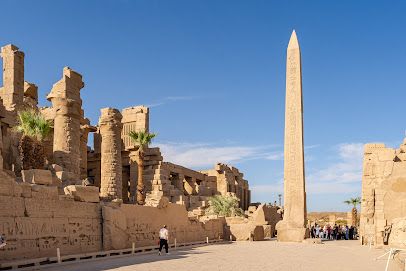
Luxor Museum
Uncover the astonishing history of ancient Egypt at Luxor Museum, home to treasures including artifacts from the tomb of Tutankhamun.
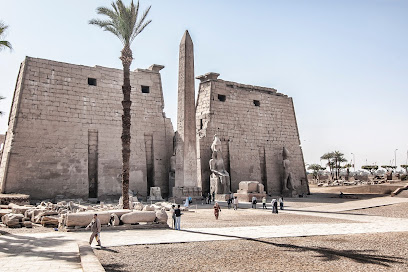
West Bank Luxor Boat booking Dahabiya Nile cruise
Embark on a luxurious Dahabiya Nile cruise from Luxor and explore ancient Egypt's treasures in a serene and intimate setting.
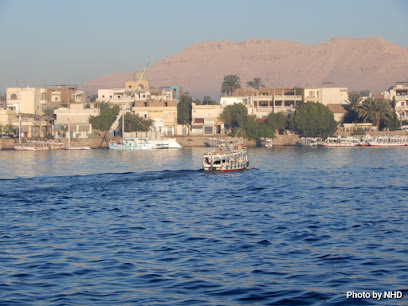
البنك الأهلي المصري فرع الاقصر
Discover convenience at the Egyptian National Bank in Luxor, the essential stop for travelers needing reliable banking services while exploring ancient Egypt.
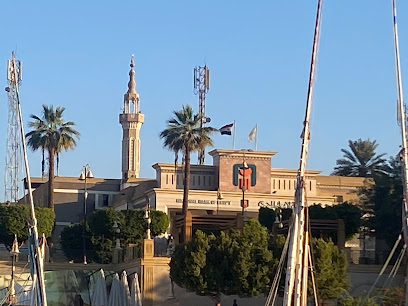
First Pylon Luxor Temple
Discover the grandeur of the First Pylon at Luxor Temple, an iconic historical landmark that embodies the splendor of ancient Egyptian architecture.
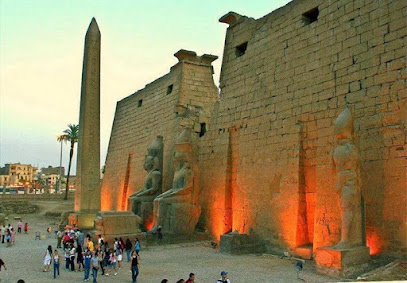
Alexbank
Experience the convenience of Alexbank in Luxor, your essential stop for financial services amidst the treasures of ancient Egypt.

Remaining Luxor Obelisk
Discover the grandeur of the Remaining Luxor Obelisk, an iconic symbol of ancient Egypt's architectural mastery and historical significance.
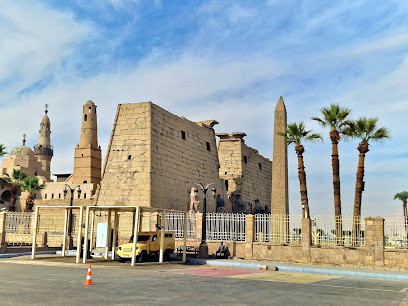
Luxor Egypt
Discover the enchanting city of Luxor, Egypt, where ancient history and vibrant culture come together to create a timeless travel experience.

Ancient Luxor Quay
Explore Ancient Luxor Quay, a fascinating historical landmark along the Nile, where Egypt's rich culture and breathtaking scenery come together.
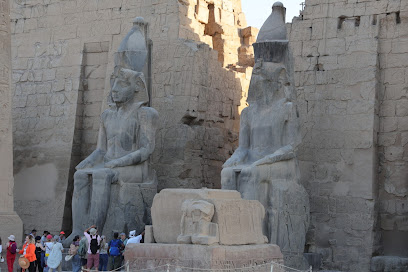
NBE ATM - Sofitel Winter Palace Hotel 1 Luxor - فندق سوفتيل 1 الأقصر
Conveniently located at the Sofitel Winter Palace Hotel, NBE ATM provides 24/7 access to cash for tourists exploring the historical treasures of Luxor.

Unmissable attractions to see
The Sphinx Avenue
Experience the majesty of ancient Egypt along the Sphinx Avenue, a historic pathway adorned with sphinxes leading to the legendary Karnak Temple.

First Pylon
Discover the grandeur of the First Pylon in Luxor, Egypt, a monumental entrance to the ancient Temple of Karnak, rich in history and artistic splendor.

Karnak Open-air Museum
Explore the wonders of Karnak Open-air Museum in Luxor, a historical landmark that showcases the magnificence of ancient Egyptian civilization.

Essential places to dine
Sofra
Savor authentic Egyptian flavors at Sofra in Luxor - a delightful blend of tradition and taste awaits every visitor.
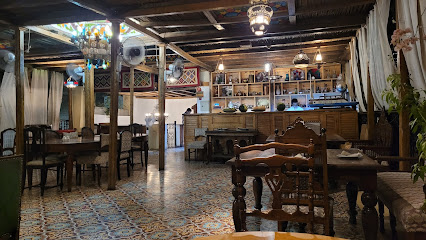
PIZZA ROMA . IT
Experience authentic Italian flavors at Pizza Roma in Luxor – where every slice tells a story.
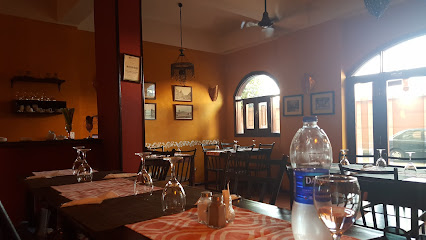
مطعم دوار الشمس Sunflower Restaurant
Experience exquisite meat dishes and stunning Nile views at Sunflower Restaurant in Luxor - a true delight for food lovers.
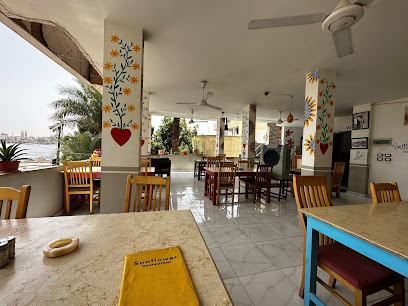
Oasis Palace
Experience authentic Egyptian cuisine at Oasis Palace in Luxor – where every dish tells a story!

مطعم توت عنخ امون Tout Ankh Amoun Restaurant
Experience authentic Egyptian cuisine with stunning Nile views at Tout Ankh Amoun Restaurant in Luxor.
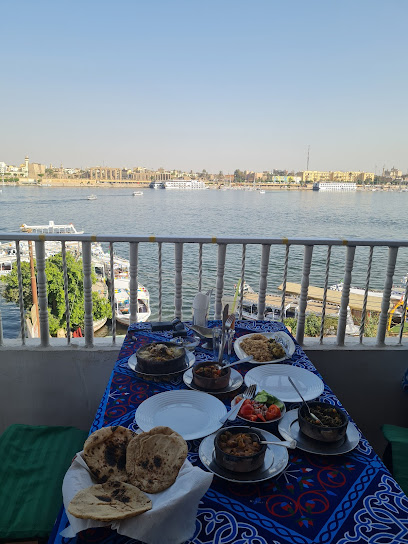
Jamboree Restaurant
Experience authentic Egyptian flavors at Jamboree Restaurant in Luxor – where delicious cuisine meets warm hospitality.
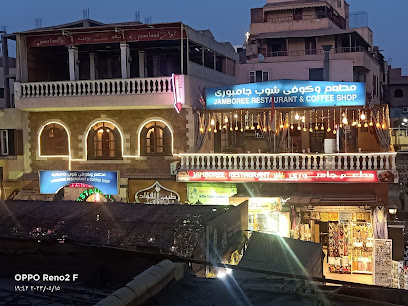
The Lantern Room Restaurant
Discover authentic Egyptian cuisine at The Lantern Room Restaurant in Luxor, where tradition meets contemporary dining in an inviting atmosphere.
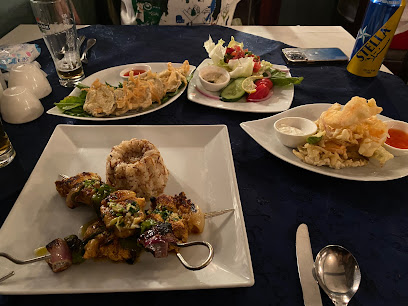
Aladdin's Kingdom Restaurant
Experience authentic Egyptian flavors at Aladdin's Kingdom Restaurant in Luxor - a delightful blend of tradition and taste.
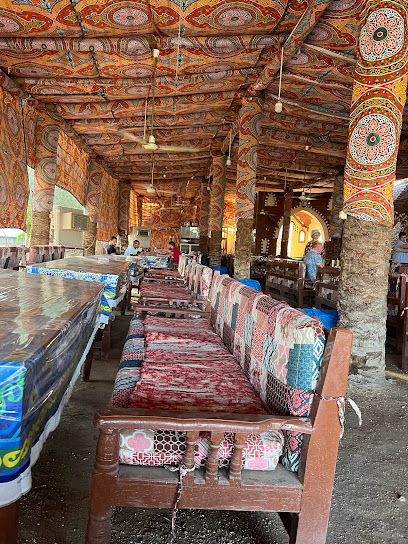
1886 Restaurant
Indulge in exquisite cuisine with stunning Nile views at 1886 Restaurant in Luxor - where fine dining meets cultural elegance.
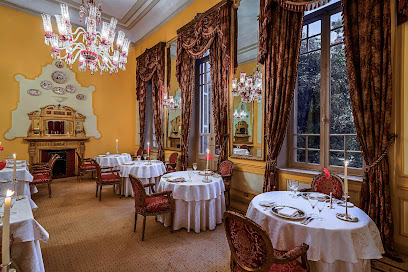
LA CORNICHE RESTAURANT
Experience exquisite Western cuisine at La Corniche Restaurant while enjoying stunning views of the Nile River in Luxor.
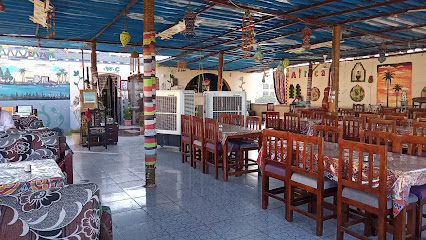
Markets, malls and hidden boutiques
Luxor Fruit and Vegetable Market
Discover the rich flavors and vibrant culture of Luxor at the bustling Fruit and Vegetable Market, a feast for the senses in the heart of Egypt.
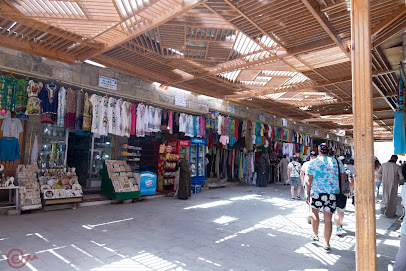
Ata Bazar
Discover the best of Luxor's craftsmanship at Ata Bazar, your go-to souvenir store for unique antiques and handcrafted treasures.
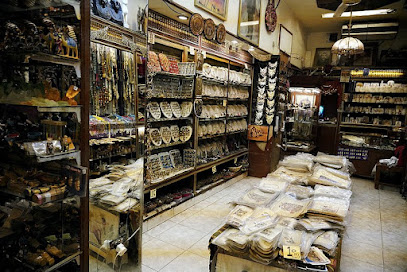
SHOP SANDOUK . HandCrafts-FairTrade
Explore authentic Egyptian handicrafts at Shop Sandouk, where every purchase supports local artisans and fair trade practices.
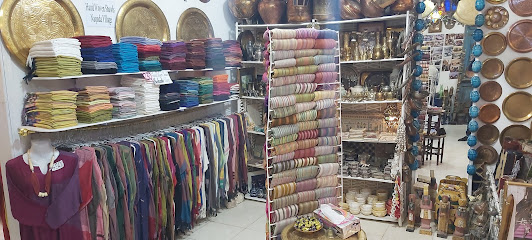
Nobles Art Gallery
Explore Luxor's Nobles Art Gallery for a unique collection of fine art and authentic antiques that embody Egypt's rich heritage.
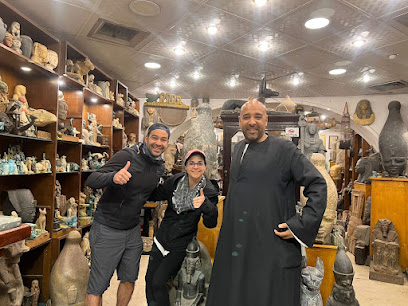
Habiba Gallery
Explore the vibrant artistry and unique handicrafts of Egypt at Habiba Gallery in Luxor, where every piece tells a story.

Old Shop
Discover a unique blend of jewelry, antiques, and art at Luxor's Old Shop, where every piece tells a story of Egyptian heritage.

Gaddis & Co.
Explore Gaddis & Co. in Luxor for an exquisite selection of handcrafted souvenirs and authentic Egyptian gifts along the Nile.
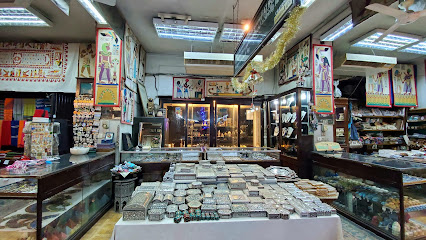
Fair Trade Center
Discover authentic handicrafts at the Fair Trade Center in Luxor, where local artisans showcase their talent in a vibrant, welcoming environment.
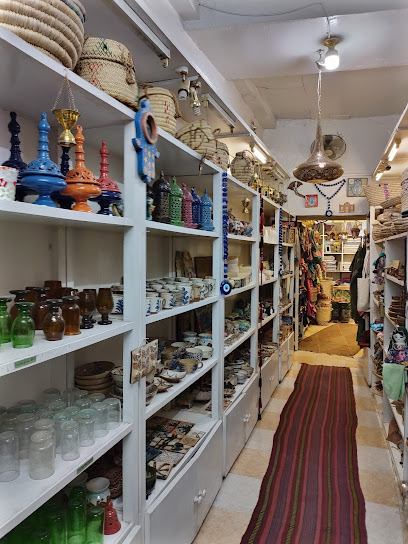
Nefertari Papyrus Institute
Explore authentic Egyptian artistry at the Nefertari Papyrus Institute, a unique souvenir store featuring exquisite handcrafted papyrus art in Luxor.

أبو وحيد للإستيراد والتصدير
Experience the essence of Luxor shopping at Abu Waheed, where unique souvenirs and local crafts await every traveler.
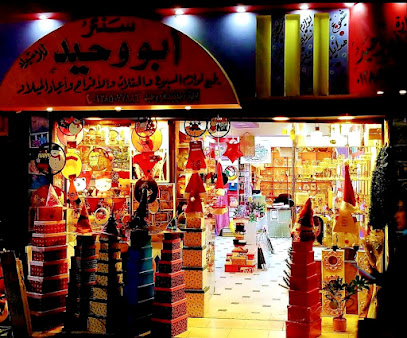
Essential bars & hidden hideouts
Al Sahaby Lane Restaurant
Experience the authentic flavors of Egypt at Al Sahaby Lane Restaurant in Luxor, with breathtaking views of the Nile River and a diverse menu.
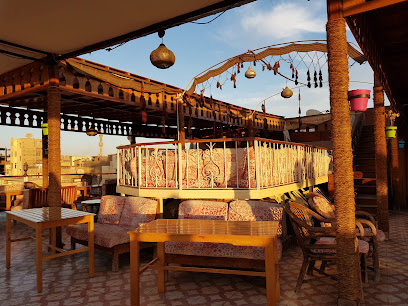
Jamboree Restaurant
Discover the flavors of Egypt at Jamboree Restaurant, Luxor's favorite spot for traditional dishes and warm hospitality.
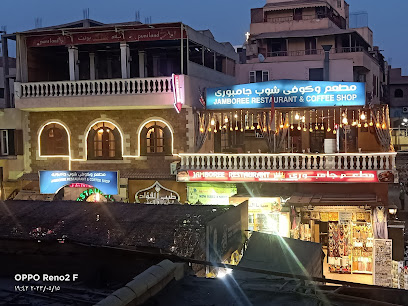
The King's Head Pub
Discover the warmth and charm of The King's Head Pub in Luxor, where locals and tourists gather for delightful drinks and a vibrant atmosphere.
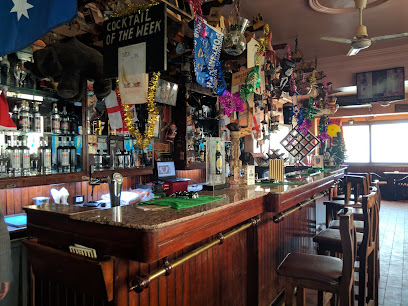
SunRise Bar & Restaurant Luxor
Experience the vibrant fusion of culinary delights and live music at SunRise Bar & Restaurant in Luxor, Egypt.
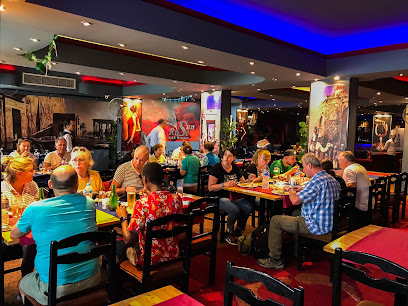
ميرفيس الأيرلندية بار Murphys Irish Bar
Discover the vibrant atmosphere of Murphys Irish Bar in Luxor, where Irish charm meets Egyptian hospitality, perfect for unwinding with friends.
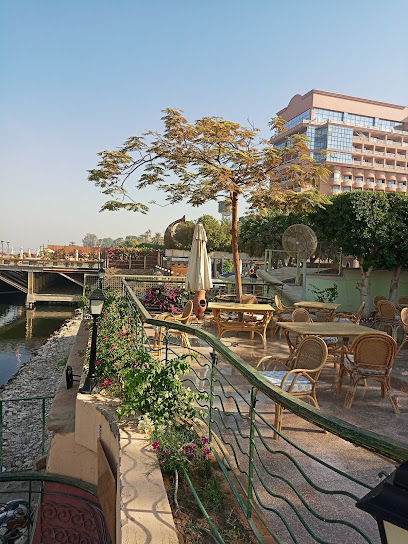
El-Gezira Hotel & Restaurant
Discover the charm of Luxor at El-Gezira Hotel & Restaurant, where comfort meets vibrant culture along the Nile.

Georgian Nile View
Discover a culinary gem in Luxor with stunning Nile views and a menu that blends local flavors with global cuisine.
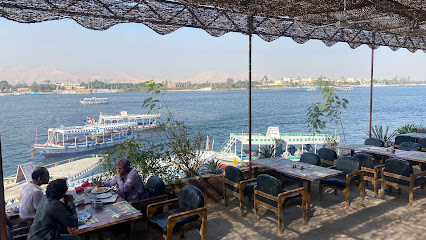
LA CORNICHE RESTAURANT
Savor Western cuisine with stunning Nile views at La Corniche Restaurant, Luxor's premier dining destination.

Royal Bar
Discover the vibrant atmosphere of Royal Bar in Luxor, where stunning Nile views meet a diverse selection of drinks for an unforgettable experience.
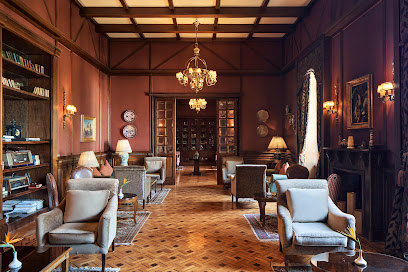
Nile Bar & Lounge
Experience the elegance of Nile Bar & Lounge in Luxor, where exquisite cocktails meet breathtaking views of the Nile River.
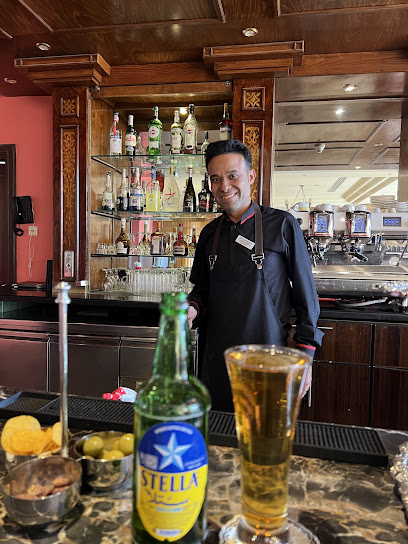
Local Phrases
-
- Helloمرحبا
[marhaba] - Goodbyeوداعا
[wada'an] - Yesنعم
[na'am] - Noلا
[la] - Please/You're welcomeمن فضلك
[min fadlik] - Thank youشكرا
[shukran] - Excuse me/Sorryعذرا
[aadhra] - How are you?كيف حالك؟
[kayfa halak?] - Fine. And you?بخير. وأنت؟
[bi-khayr. wa-ant?] - Do you speak English?هل تتحدث الإنجليزية؟
[hal tatahadath al-ingliziyya?] - I don't understandلا أفهم
[la afham]
- Helloمرحبا
-
- I'd like to see the menu, pleaseأرغب في رؤية القائمة، من فضلك
[urghab fi ru'yat al-qa'ima, min fadlik] - I don't eat meatأنا لا أأكل اللحم
[ana la aakul al-lahm] - Cheers!في صحتك!
[fi sahtak!] - I would like to pay, pleaseأود الدفع، من فضلك
[awad al-dafa', min fadlik]
- I'd like to see the menu, pleaseأرغب في رؤية القائمة، من فضلك
-
- Help!النجدة!
[al-najda!] - Go away!انصرف!
[ansarif!] - Call the Police!اتصل بالشرطة!
[itasil bialshurta!] - Call a doctor!اتصل بطبيب!
[itasil bitalib!] - I'm lostلقد ضللت
[laqad dalalt] - I'm illأنا مريض
[ana mareed]
- Help!النجدة!
-
- I'd like to buy...أرغب في شراء...
[urghab fi shira'...] - I'm just lookingأنا فقط أتطلع
[ana faqat atatallu'] - How much is it?كم هو ثمنه؟
[kam huwa thamanuh?] - That's too expensiveهذا غالي جدا
[hatha ghali jiddan] - Can you lower the price?هل يمكنك خفض السعر؟
[hal yumkinuk khafd al-si'r?]
- I'd like to buy...أرغب في شراء...
-
- What time is it?كم الساعة؟
[kam al-sa'a?] - It's one o'clockالساعة الواحدة
[al-sa'at al-wahida] - Half past (10)الساعة العاشرة والنصف
[al-sa'at al-'ashira wal-nisf] - Morningالصباح
[al-subah] - Afternoonالمساء
[al-masa'] - Eveningالليل
[al-layl] - Yesterdayأمس
[ams] - Todayاليوم
[al-yawm] - Tomorrowغدا
[ghadan] - 1واحد
[wahid] - 2اثنان
[ithnan] - 3ثلاثة
[thalatha] - 4أربعة
[arba'a] - 5خمسة
[khamsa] - 6ستة
[sitta] - 7سبعة
[saba'a] - 8ثمانية
[thamania] - 9تسعة
[tis'a] - 10عشرة
[ashara]
- What time is it?كم الساعة؟
-
- Where's a/the...?أين ...؟
[ayn ...?] - What's the address?ما هو العنوان؟
[ma huwa al-uanan?] - Can you show me (on the map)?هل يمكنك أن تريني (على الخريطة)؟
[hal yumkinuk an tarini (ala al-kharita)?] - When's the next (bus)?متى يأتي الحافلة التالية؟
[mata yaati al-hafilat al-taliya?] - A ticket (to ....)تذكرة (إلى ...)
[tathkirat (ila ...)]
- Where's a/the...?أين ...؟
History of East Bank
-
The East Bank of Luxor, known as the site of ancient Thebes, was once the capital of Egypt during the New Kingdom period (c. 1550-1070 BCE). This era saw the construction of grand temples and monumental architecture, including the magnificent Karnak Temple and the Luxor Temple, which served as both religious and political centers. The East Bank was a thriving urban hub that played a crucial role in the religious practices dedicated to the god Amun.
-
The East Bank was central to the worship of Amun, one of the most important deities in ancient Egyptian religion. The construction of the Karnak Temple Complex, which began in the Middle Kingdom and expanded in the New Kingdom, featured numerous temples, chapels, and pylons dedicated to Amun. This site became a pilgrimage destination and a symbol of the power of the Pharaohs, who sought to legitimize their rule through their association with the divine.
-
Located on the East Bank, the Mortuary Temple of Hatshepsut at Deir el-Bahari (nearby but often associated with the East Bank) is a remarkable example of ancient architecture designed to honor the Pharaoh Hatshepsut, one of Egypt's few female rulers. Completed in the 15th century BCE, this temple is renowned for its unique terraced structure and beautifully painted reliefs that depict Hatshepsut's divine birth and her trading expedition to Punt, underscoring her significance in Egyptian history.
-
During the Roman and Byzantine periods, the East Bank continued to flourish. The Romans built several structures, including a Roman fort and a temple dedicated to the goddess Isis at the Karnak Complex. The East Bank became an important administrative and religious center, maintaining its significance even as Egypt transitioned through various empires.
-
In the 19th and 20th centuries, the East Bank gained international attention due to extensive archaeological excavations. These efforts unveiled the rich history of Thebes, leading to the discovery of numerous artifacts, inscriptions, and architectural remnants that have provided invaluable insights into ancient Egyptian civilization. Today, the East Bank remains a focal point for scholars and tourists alike, showcasing the timeless allure of Luxor's ancient past.
East Bank Essentials
-
East Bank is easily accessible from various parts of Luxor. If you are coming from the West Bank, take a ferry across the Nile River, which operates frequently and offers a scenic view of the city. For those arriving at Luxor International Airport, taxis and private transfers are available to take you directly to your destination on the East Bank. Additionally, Luxor's central bus station provides intercity buses, connecting you to other major cities in Egypt.
-
East Bank is well-connected and easy to navigate. Local taxis and ride-sharing apps like Uber operate within the area, providing convenient transport options. Bicycles can be rented from various shops, allowing for a leisurely exploration of the local sights. Public buses are available, but they may be less tourist-friendly. Walking is also a great way to soak in the vibrant atmosphere of East Bank, particularly around areas like the Karnak Temple and Luxor Temple.
-
East Bank is generally safe for tourists; however, standard precautions should be taken. Areas around crowded markets and bus stations can be prone to petty crime, such as pickpocketing. It's advisable to avoid wandering alone at night in less populated areas and to keep your belongings secure. While there are no specific high-crime areas targeting tourists, staying alert and cautious is always wise.
-
In case of an emergency, dial 122 for police assistance or 123 for medical emergencies in Egypt. The local hospitals and clinics in Luxor are equipped to handle most situations, but it's advisable to have travel insurance that covers medical emergencies. For minor health issues, pharmacies are available across East Bank, offering over-the-counter medications.
-
Fashion: Do dress modestly, particularly when visiting religious sites; avoid revealing clothing. Religion: Do respect local customs and traditions; refrain from taking photographs in places of worship without permission. Public Transport: Do give up your seat for elderly passengers and be polite. Don't eat or drink on public transport. Greetings: Do greet locals with a warm smile and a handshake; a slight nod shows respect. Eating & Drinking: Do try local cuisine and accept invitations to share food; don't refuse hospitality, as it is considered impolite.
-
To experience East Bank like a local, visit the vibrant Luxor Market, where you can shop for spices, textiles, and souvenirs. Engage with local vendors who are often eager to share stories and recommendations. For an authentic dining experience, seek out small local eateries that serve traditional Egyptian dishes. Consider taking a felucca ride on the Nile at sunset for a memorable view of the city skyline.
Trending Landmarks in East Bank
Nearby Cities to East Bank
-
Things To Do in Sohag
-
Things To Do in Aswan
-
Things To Do in Hurghada
-
Things To Do in El Gouna
-
Things To Do in Asyut
-
Things To Do in Marsa Alam
-
Things To Do in Sharm El Sheikh
-
Things To Do in Minya
-
Things To Do in Dahab
-
Things To Do in Beni Suef
-
Things To Do in Suez
-
Things To Do in Eilat
-
Things To Do in Aqaba
-
Things To Do in Tabuk
-
Things To Do in Cairo

